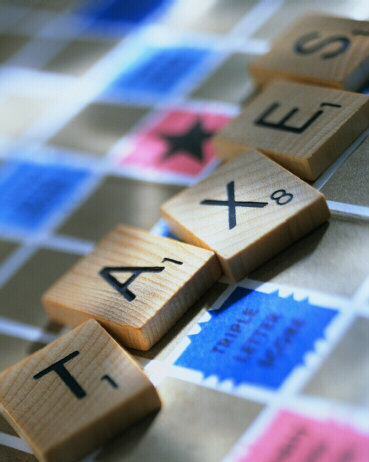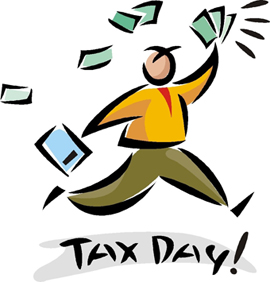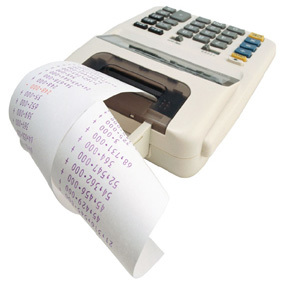
A sole trader in the UK can operate a very basic accounting system. Provided supporting evidence is retained to show the basic accounts are realistic and the income and expenditure statement accurate for basic tax purposes sophisticated accountancy, debits and credits are not required. Basic accounts for a sole trader do not require the production of a balance sheet.
In order for a sole trader to be able to keep basic tax accounts certain conditions regarding the status of business accounts must be satisfied. Sales turnover should be under the vat threshold limit, a balance sheet not required, a business bank account not used and no employees employed. If the conditions are met then a simple income and expenditure statement is all that is required greatly simplifying the bookkeeping.
Self employed businesses are not required to maintain a balance sheet. If a balance sheet is maintained then to produce one the business needs to operate an accounting system based upon double entry bookkeeping and involving technical features such as debtors and creditors control accounts. Sole traders who do not need to produce a balance sheet can then maintain their basic accounting using single entry bookkeeping which is basically making lists of the financial transactions.
If a balance sheet is not produced the sole trader must keep a record of all capital expenditure items as part of the basic tax accounts to enable the capital allowances to be claimed each tax year. Receipts need to be retained as part of the basic accounts to enable the annual investment allowance to be claimed in the first year and writing down allowances in subsequent years.
More detailed financial records are required to be kept by the sole trader if they are vat registered. The vat threshold for the financial year starting April 2008 is £67,000. Part of the vat rules state that when a business is vat registered they should maintain an audit trail of transactions to support the vat return.
A sole trader does not have to operate a business bank account however if a business bank account is used then accounting records should be kept as the taxation authority, HMRC can ask to see details of the account. This inspection is to verify the transactions support the basic accounts produced. If a business bank account is not used then HMRC do not have a statutory right to view the sole trader personal bank account and that personal; account does not have to be a feature of the sole trader basic accounts.
When a sole trader has employees then as an employer a PAYE system is required which involves maintaining accurate wages records of employees, gross wages, income tax and national insurance deductions and net pay. Various PAYE records must also be maintained such as the working deductions sheet and also payslips must be issued to employees. The payroll records form part of the financial accounts of the sole trader who would actually be better called self employed if they have employees.
In the circumstances where a sole trader has no employees, is not vat registered and does not maintain a business bank account then formal accounts are not essential and a simple income and expenditure account statement can be produced. It is still essential that those sole trader basic accounts are supported with copies of invoices given to customers or records of amounts taken plus documentary evidence to support the payments made to suppliers.
On the sales side the basic accounting can consist of a list of the sales which when totalled produces the sales turnover of the business which is the income side of the income and expenditure statement. As not all sales may be received at the time of sale it is useful to keep a record of the date of the sale, the customer, amount and when and how much the customer has paid for credit control purposes.
Similar to the income side the expenditure can consist of a list of the amounts paid out to suppliers. It is advisable to perform a small amount of analysis of this expenditure as when reported on the self employed tax return the expenditure may need to be analysed according to the type of expense. All expenditure items claimed as business expenses should be supported with documentary evidence of that expense for basic tax purposes.
At the end of the financial year the sole trader income and expenditure account statement will state the total sales with the expenditure side being a list of all the expenditure by type of expense including any capital allowances claimed. Total the expenditure and deduct the total from the sales turnover to produce basic accounting record showing the net taxable profit.
A simple method of keeping the information to produce the income and expenditure account statement is to use accounting software spreadsheets with preset columns for sales and the expenditure types. The sole trader should also consider maintaining a separate list of the assets purchased as part of the basic tax accounts.
 Terry Cartwright qualified as a Chartered Management Accountant and Chartered Company Secretary in 1971. A successful business career followed as Head of Finance for major companies in the UK and several consultancy appointments. In 2006 he created DIY Accounting producing Accounting Software for self employed and small companies that use simple accounts spreadsheets to automate tax returns.
Terry Cartwright qualified as a Chartered Management Accountant and Chartered Company Secretary in 1971. A successful business career followed as Head of Finance for major companies in the UK and several consultancy appointments. In 2006 he created DIY Accounting producing Accounting Software for self employed and small companies that use simple accounts spreadsheets to automate tax returns.
Tag: basic tax
UK Tax Codes Explained

UK tax codes are determined by HMRC, notified to employees and used by employers to calculate tax to be deducted from employee income. Inland Revenue tax codes explained as being made up of numbers or letters and usually both. When multiplied by 10 the number indicates the amount of tax free personal allowance the person is entitled to and the letter indicates the conditions which might be applicable to the UK tax code to enusre the correct Tax is calculated.
Virtually everyone in the UK is entitled to a personal allowance if they are resident in the UK which entitles them to tax free income, the amount of that tax free income being dependent on the size of the personal allowance according to the specific circumstances. Earnings above the tax free allowance are subject to the basic rate tax. The basic tax rate personal allowance was £5435 from 6 April 2008 and increased by £600 to £6,035 which effect from the first pay date after 7 September 2008. The original personal allowance tax code 543L being increased to new tax code 603L reflecting these changes to calculate tax at the new rate from 7 September 2008..
Basic rate tax for 2008 is 20 percent. For earnings above the higher income threshold which is £34.800 the basic rate tax increases to 40 per cent.
The personal allowance of people over 65 and up to 74 is £9,030 which is reduced if income exceeds £21,800 and people over 75 receive a personal allowance of £9,180 also reduced when income exceeds the £21,800 income threshold. The rate of tax allowance reduction is £1 for every £2 above the income threshold until the basic personal allowance is reached.
The number in the UK tax code is known as the prefix while the letter following that number is known as the suffix. Each suffix letter in the tax codes explained as a different meaning.
Letter L means eligible for the basic personal allowance and is also used for the emergency tax codes. Letter P is for people aged 65 to 74 and letter V for people aged 75 and over, while letter Y is also for people over 75 but who are eligible for the full personal allowance. A tax code with a suffix letter T indicates there may be issues that HMRC still need to review regarding the tax code and letter K indicates that the value of taxable benefits exceeds the personal allowance.
Where untaxed incomes, such as benefits, are received by the employee exceed the personal allowance a K code is issued by HMRC. The number following the letter K indicates the amount of benefits multiplied by 10 that are to be taxed in addition to the gross earnings received. This is achieved by adding the K code number multiplied by 10 to the gross earnings of the employee for income tax purposes.
Some Inland Revenue tax coding consists of just letters allowing the tax codes explained simply. The BR tax code means basic rate where the employee entire earnings are taxed at the basic tax rate. The BR tax code is often used when an employee has a second job and should also be applied by an employer who has not received a P45 or P46 for a new employee. The NT tax codes explained is that no tax is deducted from the employee so the basic rate tax does not apply..
HMRC are responsible for issuing tax codes and determine the Inland Revenue tax code by giving everyone the personal allowance, deducting any earnings where tax remains unpaid from the previous year and dividing the result by 10. Variations to this calculation are when other factors affect the tax code.
An emergency tax code is issued to calculate tax when the new tax code is not immediately available. That can occur when the employee does not have a P45 or completes a P46. The emergency tax code 543L is replaced with the new tax code 603L from 7 September 2008 which is the basic tax allowance but is also applied on a week one or month one basis. A week one or month one basis means the employer will calculate tax to be deducted for each pay period and not on a cumulative basis which in effect prevents tax refunds until a confirmed tax code is received to replace the emergency tax code..
It is important for employers to use the correct UK tax code in the PAYE system which is stated on the P45 an employee presents to the new employer when starting employment to deduct the correct rate of tax. If the new employee does not have a P45 for the current financial year then the employer should request the employee complete a P46. The P46 is sent to HMRC who then review the tax coding and issue an appropriate tax code for the employer to use.
The personal allowance usually changes each new tax year and the old Inland Revenue tax codes from the previous year can be used for the first few weeks of the year and replaced with the new tax code in week 7. The rate of tax deducted if the previous year personal tax allowance has been increased is common and the employee receives a tax refund when the new tax code is applied. When the new tax code is known from the start of the new tax year the tax coding can be applied from week one and as the correct tax has been deducted no refund is due.
 Terry Cartwright qualified as a Chartered Management Accountant and Chartered Company Secretary in 1971. A successful business career followed as Head of Finance for major companies in the UK and several consultancy appointments. In 2006 he created DIY Accounting producing Accounting Software for self employed and small companies that use simple accounts spreadsheets to automate tax returns.
Terry Cartwright qualified as a Chartered Management Accountant and Chartered Company Secretary in 1971. A successful business career followed as Head of Finance for major companies in the UK and several consultancy appointments. In 2006 he created DIY Accounting producing Accounting Software for self employed and small companies that use simple accounts spreadsheets to automate tax returns.
Sole Trader Basic Accounting

In order for a sole trader to be able to keep basic tax accounts certain conditions regarding the status of business accounts must be satisfied. Sales turnover should be under the vat threshold limit, a balance sheet not required, a business bank account not used and no employees employed. If the conditions are met then a simple income and expenditure statement is all that is required greatly simplifying the bookkeeping.
Self employed businesses are not required to maintain a balance sheet. If a balance sheet is maintained then to produce one the business needs to operate an accounting system based upon double entry bookkeeping and involving technical features such as debtors and creditors control accounts. Sole traders who do not need to produce a balance sheet can then maintain their basic accounting using single entry bookkeeping which is basically making lists of the financial transactions.
If a balance sheet is not produced the sole trader must keep a record of all capital expenditure items as part of the basic tax accounts to enable the capital allowances to be claimed each tax year. Receipts need to be retained as part of the basic accounts to enable the annual investment allowance to be claimed in the first year and writing down allowances in subsequent years.
More detailed financial records are required to be kept by the Sole Trader if they are vat registered. The vat threshold for the financial year starting April 2008 is £67,000. Part of the vat rules state that when a business is vat registered they should maintain an audit trail of transactions to support the vat return.
A sole trader does not have to operate a business bank account however if a business bank account is used then accounting records should be kept as the taxation authority, HMRC can ask to see details of the account. This inspection is to verify the transactions support the basic accounts produced. If a business bank account is not used then HMRC do not have a statutory right to view the sole trader personal bank account and that personal; account does not have to be a feature of the sole trader basic accounts.
When a sole trader has employees then as an employer a PAYE system is required which involves maintaining accurate wages records of employees, gross wages, income tax and national insurance deductions and net pay. Various PAYE records must also be maintained such as the working deductions sheet and also payslips must be issued to employees. The payroll records form part of the financial accounts of the sole trader who would actually be better called self employed if they have employees.
In the circumstances where a sole trader has no employees, is not vat registered and does not maintain a business bank account then formal accounts are not essential and a simple income and expenditure account statement can be produced. It is still essential that those sole trader basic accounts are supported with copies of invoices given to customers or records of amounts taken plus documentary evidence to support the payments made to suppliers.
On the sales side the basic accounting can consist of a list of the sales which when totalled produces the sales turnover of the business which is the income side of the income and expenditure statement. As not all sales may be received at the time of sale it is useful to keep a record of the date of the sale, the customer, amount and when and how much the customer has paid for credit control purposes.
Similar to the income side the expenditure can consist of a list of the amounts paid out to suppliers. It is advisable to perform a small amount of analysis of this expenditure as when reported on the self employed tax return the expenditure may need to be analysed according to the type of expense. All expenditure items claimed as business expenses should be supported with documentary evidence of that expense for basic tax purposes.
At the end of the financial year the sole trader income and expenditure account statement will state the total sales with the expenditure side being a list of all the expenditure by type of expense including any capital allowances claimed. Total the expenditure and deduct the total from the sales turnover to produce basic accounting record showing the net taxable profit.
A simple method of keeping the information to produce the income and expenditure account statement is to use an accounting spreadsheet with preset columns for sales and the expenditure types. The sole trader should also consider maintaining a separate list of the assets purchased as part of the basic tax accounts.
 Terry Cartwright qualified as a Chartered Management Accountant and Chartered Company Secretary in 1971. A successful business career followed as Head of Finance for major companies in the UK and several consultancy appointments. In 2006 he created DIY Accounting producing Accounting Software for self employed and small companies that use simple accounts spreadsheets to automate tax returns.
Terry Cartwright qualified as a Chartered Management Accountant and Chartered Company Secretary in 1971. A successful business career followed as Head of Finance for major companies in the UK and several consultancy appointments. In 2006 he created DIY Accounting producing Accounting Software for self employed and small companies that use simple accounts spreadsheets to automate tax returns.